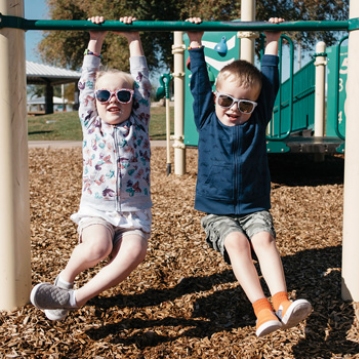
However, allergy season doesn’t have to keep you indoors. Pediatric health expert Dr. Tanya Altmann offers these tips to help manage and prevent common symptoms.
Avoid the allergy: Avoid what you are allergic to as much as possible. If you are allergic to tree and grass pollens, limit your time outdoors.
Consider taking part in activities without as much exposure to tree and grass pollen, such as gymnastics or swimming.
Spend time outside in the afternoon: While exercise and playing outdoors are important (and fun), try to stay inside during the morning hours when pollen counts are typically at their highest, and instead opt for outdoor workouts and activities later in the day.
Protect your face: Shield your eyes with sunglasses, keep your hair pulled back or wear a hat to prevent pollen from contacting your face.
Wash your pets: Your furry friends are also vehicles for transporting pollen. Wash them after being outside so they don’t bring pollen into the house. Talk with your veterinarian regarding the best practices for washing your pet.
Close windows: Keep bedroom windows closed to prevent pollen from entering. If you love the fresh air, open non-bedroom windows in the afternoon or evening when pollen counts are lower, or opt for indoor fans and air conditioning.
Wash pollen off: Bathe kids and change clothes after being outside to remove pollens from their hair, faces and clothing. Pollens are airborne and microscopic, so you can’t always see them. Wash hair at night to avoid sleeping in pollen.
Do your laundry: Pollen can linger on clothing, so try to wash clothes after they’ve been worn, especially after outside play. Use laundry products that are made without dyes and perfumes, such as Clorox 2 Free & Clear Stain Remover & Color Booster. They’re gentle for people who have sensitive skin or allergies, but tough on stains when paired with detergent.
For more ways to keep your clothes clean during allergy season, visit Clorox.com.






















